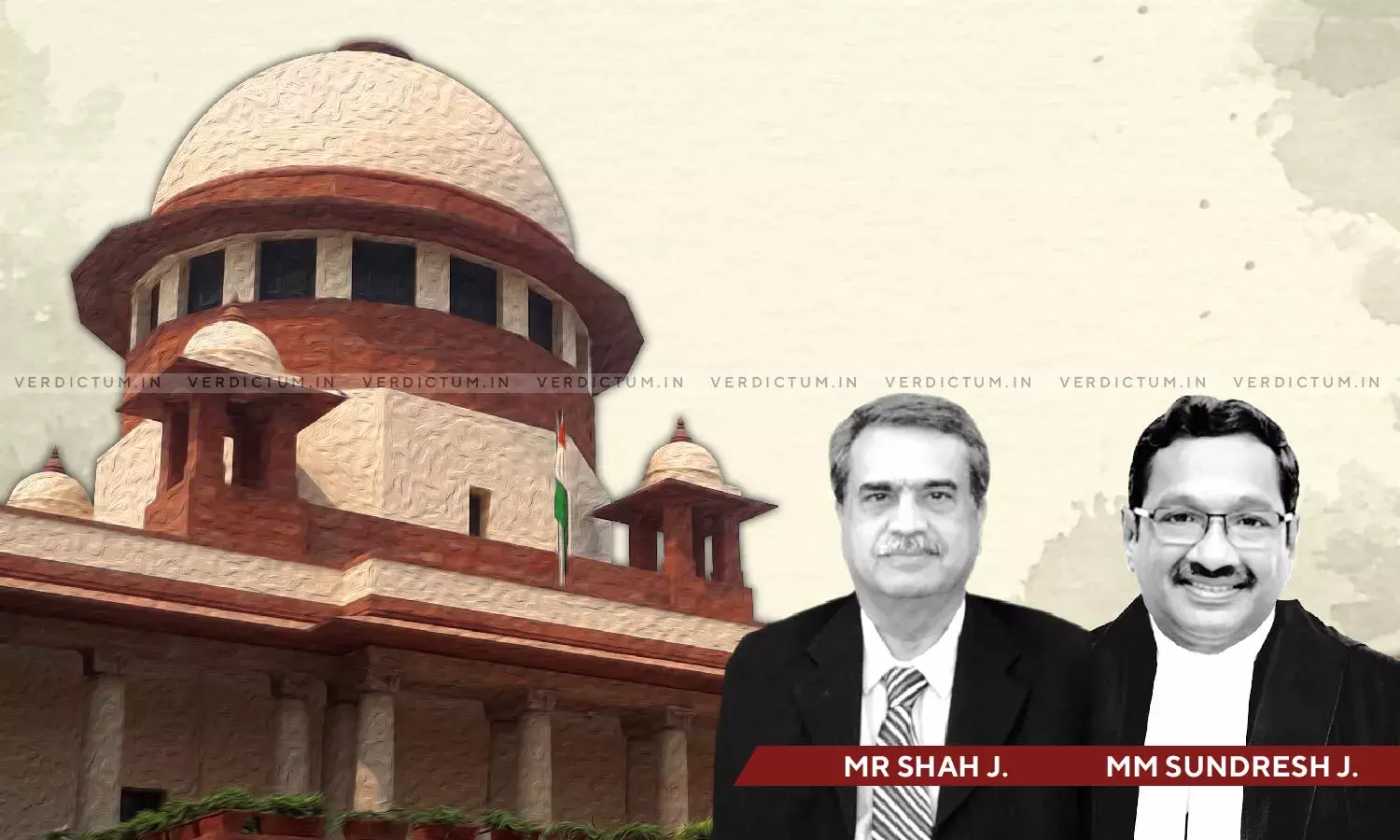Burden Of Proof Is On Borrower To Prove Particular Property Is Agricultural Land Under SARFAESI Act- SC
The Supreme Court has held that in the proceedings under the Securitisation and Reconstruction of Financial Assets and Enforcement of Security Interest Act, 2002 ('SARFAESI Act') burden was upon the borrowers to prove that the secured properties were agricultural lands and were actually being used as agricultural lands and were thus, exempted under Section 31(i) of SARFAESI Act.
The Bench of Justice MR Shah and Justice MM Sundresh observed that “when no evidence was led at all on behalf of the borrowers that the secured properties in question were actually put to use as agricultural land and/or any agricultural activity was going on, the High Court has committed an error in applying Section 31(i) of the SARFAESI Act and quashing and setting aside the entire Possession Notice, Auction Notice as well as Sale etc.”
In this case, the appeal was preferred against the judgment and order of Telangana High Court by which the order passed by the DRT was quashed and set aside observing that in view of Section 31(i) of the SARFAESI Act, the property being an agricultural land could not have been put to auction. The DRT, while dismissing the application filed by the borrowers against the auction sale, had observed that the lands in question were not agricultural land, exempted from the provisions of the SARFAESI Act.
Senior Advocate Dhruv Mehta appeared for the auction purchaser and the secured creditor while Senior Advocate Pratap Narayan Sanghi appeared on behalf of the borrower.
The Apex Court observed that the High Court had erred in entertaining the writ petition under Article 226/227 of the Constitution of India challenging the judgment and order of the DRT as an alternative statutory remedy was available by way of appeal before the DRAT.
“By entertaining the writ petition straightway under Article 226/227 of the Constitution of India challenging the order passed by the DRT-I, the High Court has allowed / permitted the borrower to circumvent the provision of appeal before the DRAT under the provisions of the SARFAESI Act,” observed the Apex Court.
The Apex Court further noted that no evidence was filed by the borrowers, except the revenue records, to show that any agricultural work was being done in the said properties. But on the other hand, the secured creditor produced the photographs to show that there were no agricultural activities being done.
The Apex Court observed that "only in a case where the secured property is actually put to use as agricultural land and solely on the basis of the revenue records / Pattadar and once the secured property is put as a security by way of mortgage etc. meaning thereby the same was not treated as agricultural land, such properties cannot be said to be exempted from the provisions of the SARFAESI Act under Section 31(i) of the SARFAESI Act."
The Court further observed that the High Court even erred in shifting the burden upon the secured creditor to prove that the properties were not non-agricultural lands or have been put to non-agricultural use and said that “When it was the case on behalf of the borrowers that in view of Section 31(i) of the SARFAESI Act, the properties were agricultural lands, the same were being exempted from the provisions of the SARFAESI Act, the burden was upon the borrower to prove that the secured properties were agricultural lands and actually being used as agricultural lands and/or agricultural activities were going on.”
Accordingly, the appeal was allowed and the impugned judgment of the High Court was quashed and set aside.
Cause Title- K. Sreedhar v M/s Raus Constructions Pvt. Ltd. & Ors.
Click here to read/download the Judgment




